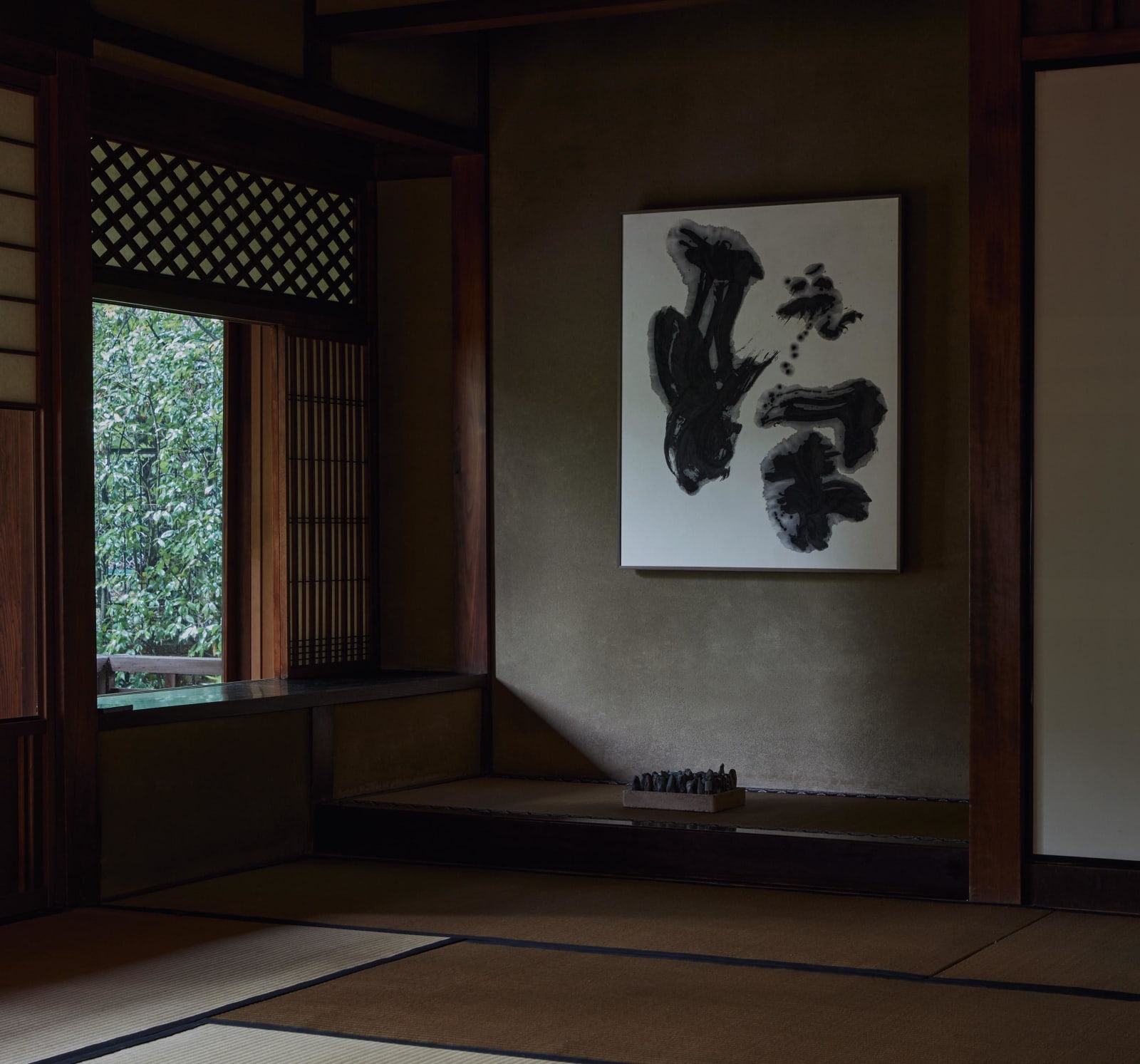Morita Shiryū (1912–1998)
Shizuka
Ink on paper, framed
1969
With a label signed by the artist
98 x 81 cm
101 x 84 cm (overall)
1969
With a label signed by the artist
98 x 81 cm
101 x 84 cm (overall)
Exhibitions
Solo exhibition. Ottawa: The National Gallery of Canada; traveling exhibition throughout Canada, 1969.Literature
Morita Shiryu Catalogue Raisonné: 1952–1998. Uji: Soryusha, 2019.
Morita executed the transition from the character’s left-side radical to the righthand part barely lifting the brush from the paper. By contrast, proceeding from the second to the third stroke of the righthand part seems to have taken him a certain amount of time, as is evident from the ink drippings that trace his movement. Like a metronome these drippings seem to indicate the flow of time when the artist was working, recording the intervals of his breathing. Traversing these tiny stepping stones to the third stroke, Morita took a brief moment to lift his hand, just before he plunged the brush down once more like a bird of prey descending rapidly on its target from high up in the sky. Shizuka (quiet) seems an appropriate notion to illustrate that minuscule moment of stillness between breathing in and breathing out. Brush traces splitting into two or three separate lines of ink and unifying again appear like the interwoven melodies in a musical ensemble piece.
While the character shizuka means quiet or quietness, Morita added the further meaning of the absence of narrow-mindedness and pretense, thus having it embody a notion of virtue. Shizuka was among the works shown in 1969 in his traveling solo exhibition in Canada.
Morita Shiryu (avant-garde calligrapher; 1912–1998)
Avant-garde calligrapher from Hyogo Prefecture. Like fellow artist Inoue Yuichi, Morita studied under the calligraphy master Ueda Sokyu. He co-founded the avant-garde group Bokujinkai together with Inoue and was the founder and editor of the journal Bokubi (Beauty of Ink), both of which revolutionized traditional Japanese calligraphy and spread knowledge of Japanese avant-garde calligraphy to an international audience. He was posthumously awarded the Medal of Honor with Dark Blue Ribbon.
While the character shizuka means quiet or quietness, Morita added the further meaning of the absence of narrow-mindedness and pretense, thus having it embody a notion of virtue. Shizuka was among the works shown in 1969 in his traveling solo exhibition in Canada.
Morita Shiryu (avant-garde calligrapher; 1912–1998)
Avant-garde calligrapher from Hyogo Prefecture. Like fellow artist Inoue Yuichi, Morita studied under the calligraphy master Ueda Sokyu. He co-founded the avant-garde group Bokujinkai together with Inoue and was the founder and editor of the journal Bokubi (Beauty of Ink), both of which revolutionized traditional Japanese calligraphy and spread knowledge of Japanese avant-garde calligraphy to an international audience. He was posthumously awarded the Medal of Honor with Dark Blue Ribbon.



